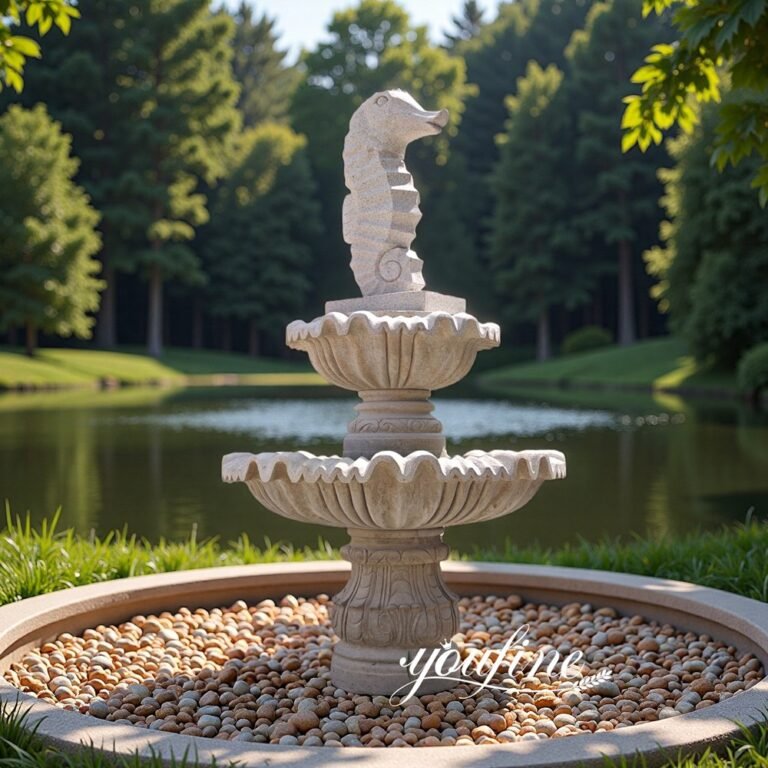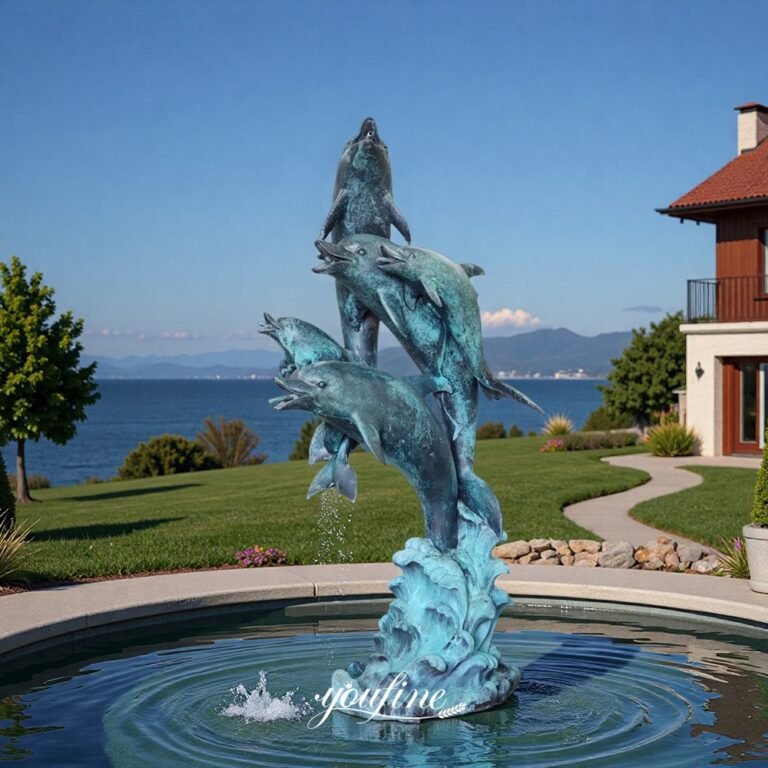Marble fountains are a popular choice for adding elegance and sophistication to outdoor spaces, gardens, and homes. However, like any other outdoor feature, they are not immune to wear and tear. Over time, marble fountains can face certain problems, many of which can be avoided or fixed with the right care and maintenance. In this blog post, we’ll explore some common issues that owners of marble fountains encounter and provide practical solutions to fix them.
1. Cracks and Chips in the Marble
Problem:
Marble is a natural stone that, while durable, can become cracked or chipped due to impact, freeze-thaw cycles, or long-term exposure to the elements. These cracks not only detract from the fountain’s appearance but can also lead to further damage if not addressed.
Solution:
Small cracks and chips can often be repaired with marble filler or epoxy resin. For larger cracks, you may need to consult a professional stone mason who can properly assess and repair the damage. To prevent future issues, ensure that the fountain is placed in an area where it is less likely to be struck by debris, and try to cover it during extreme weather conditions.
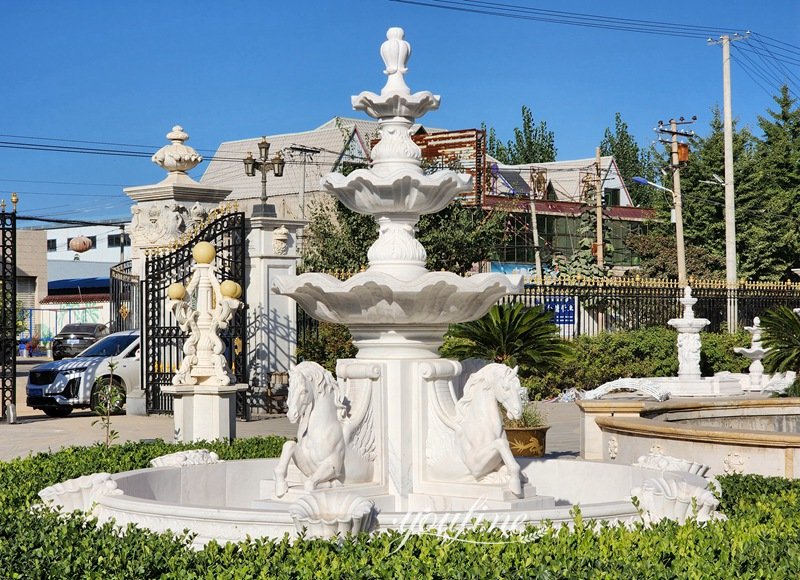
2. Staining and Discoloration
Problem:
Marble is porous, meaning it can absorb water, oils, or other substances that can lead to staining. Additionally, the fountain’s constant exposure to water may cause algae or mineral deposits to accumulate on the stone surface, causing unsightly discoloration.
Solution:
Regularly cleaning the fountain with a mild soap solution can help remove surface dirt and algae. For stubborn stains, a gentle marble cleaner specifically designed for stone surfaces is recommended. To address mineral deposits, you can use a mixture of water and vinegar (in small amounts) or purchase a descaling solution. Always ensure that the marble is properly rinsed after cleaning to avoid residue buildup.
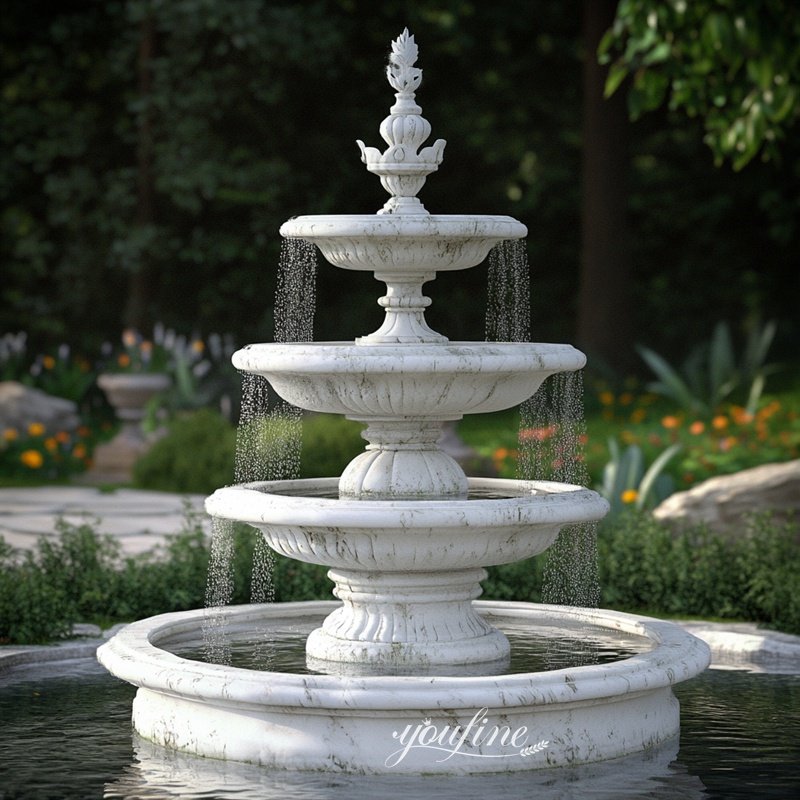
3. Water Flow Issues
Problem:
Water flow problems, such as uneven or low water pressure, can occur due to blockages in the pump, pipes, or spouts. This can lead to poor water circulation and affect the overall aesthetics and functionality of the fountain.
Solution:
Start by inspecting the pump and cleaning any debris or buildup that may be obstructing water flow. If the pump appears to be malfunctioning, you may need to replace it with a new one. It’s also important to regularly check the fountain’s tubing for clogs, and clean the spouts to ensure the water flows evenly. If the water pressure is low due to the fountain’s design, a more powerful pump might be necessary.
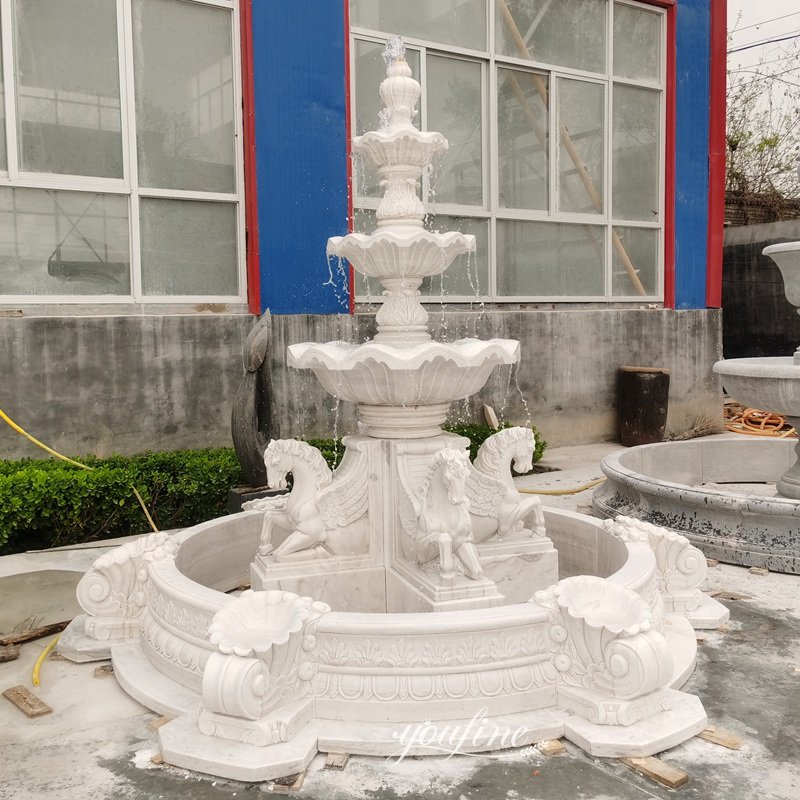
4. Crystallization (Efflorescence)
Problem:
Efflorescence is the white, powdery residue that can form on marble surfaces when water evaporates and leaves behind mineral deposits. This is particularly common in areas with hard water and high humidity, and it can make the marble look dirty or dull.
Solution:
Efflorescence can typically be removed by gently scrubbing the surface with a soft-bristled brush and a mixture of water and mild detergent. In severe cases, a commercial efflorescence remover designed for stone surfaces can help. To prevent future build-up, consider using distilled or filtered water in the fountain to minimize mineral deposits. You can also apply a stone sealer to the marble, which can help reduce water absorption and the formation of efflorescence.
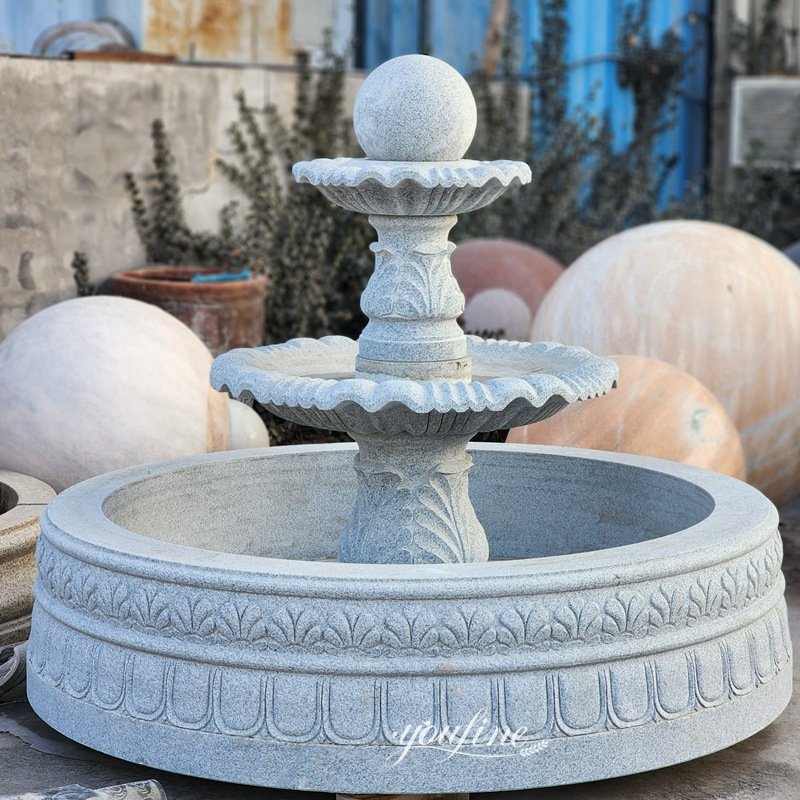
5. Water Leaks
Problem:
Leaks in marble fountains can occur due to cracks in the basin or faulty plumbing. This can result in water loss, making it necessary to refill the fountain constantly, and can also cause damage to the surrounding area.
Solution:
To fix a leak, you first need to locate its source. Inspect the basin for visible cracks, and check all plumbing connections for looseness. For small cracks, a waterproof sealant specifically designed for marble can be applied. If the leak is extensive, you may need to have the fountain professionally repaired. It’s also a good idea to check the fountain periodically for leaks to avoid water wastage and damage.
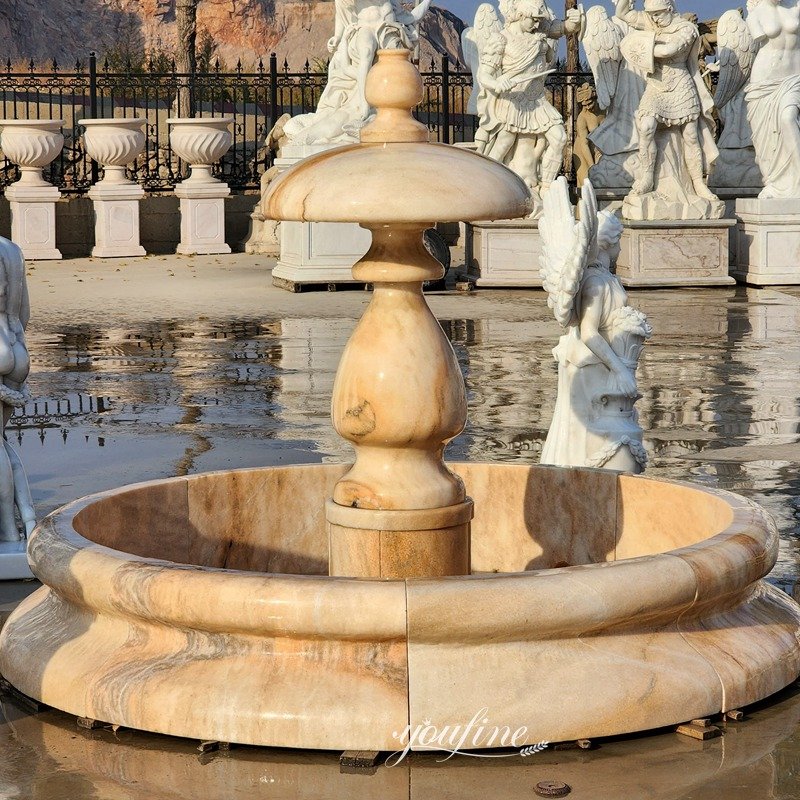
6. Fountain Pump Failure
Problem:
The pump in a marble fountain is crucial for water circulation, and when it fails, the entire fountain loses its charm. A pump can fail due to electrical issues, debris clogging, or general wear and tear.
Solution:
Regular maintenance of the pump is key to ensuring it continues to function properly. Cleaning the pump and checking the electrical components periodically can prevent many common issues. If the pump stops working entirely, it may need to be replaced. When selecting a replacement pump, be sure to choose one that matches the size and water volume requirements of your marble fountain.
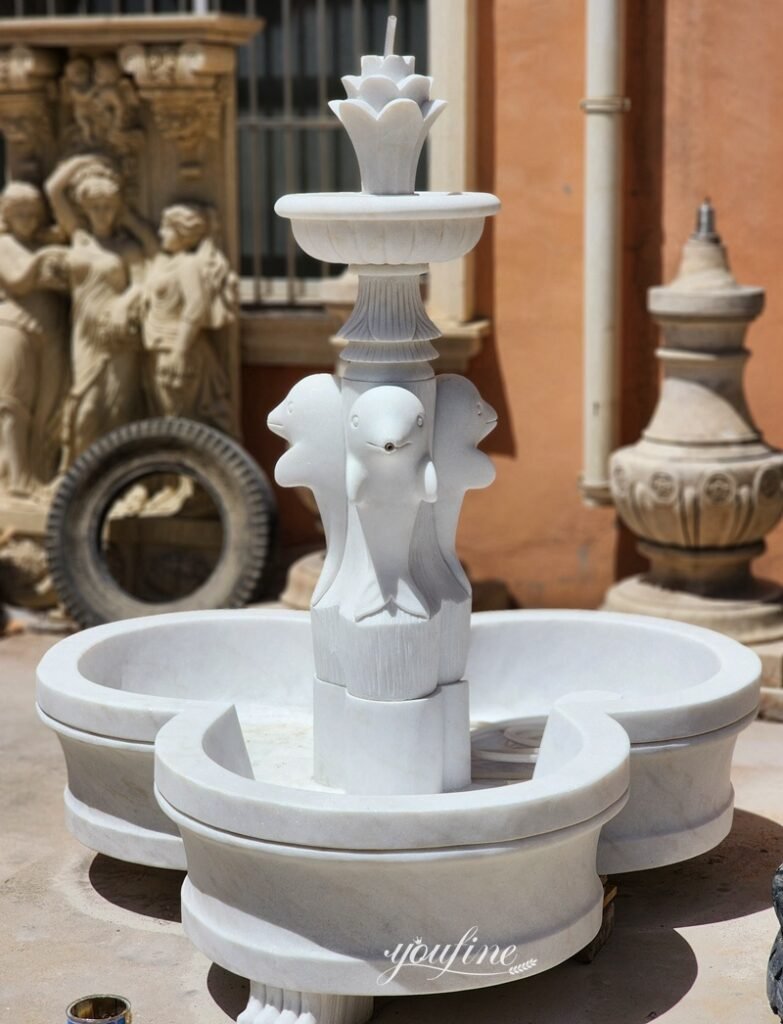
7. Growth of Algae or Mold
Problem:
The constant presence of water in marble fountains creates the perfect environment for algae or mold to grow. Over time, this can cause the marble to appear discolored and can even affect the water quality.
Solution:
To prevent algae growth, clean your marble fountain regularly and keep the water clean. Adding a small amount of fountain-safe algae remover can also help keep algae in check. If you live in a humid climate, consider using a fountain cover during the off-season to prevent mold from forming. Additionally, ensure that your fountain has proper drainage to avoid stagnant water, which promotes algae and mold growth.
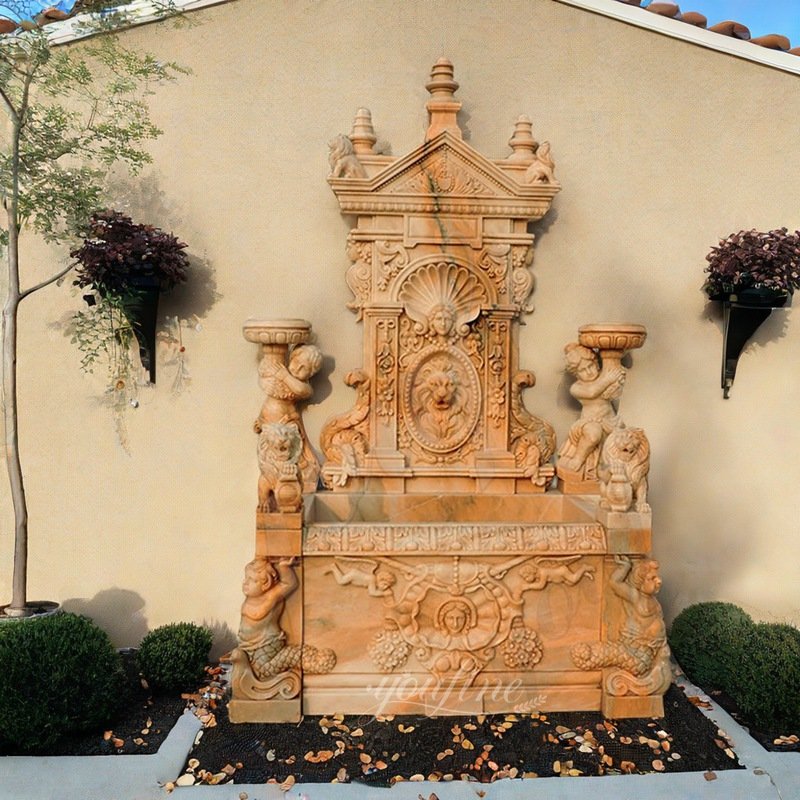
Owning a marble fountain can be a rewarding experience, as it adds beauty and tranquility to your outdoor or indoor space. However, like any feature, it requires regular maintenance and care to keep it functioning properly. By addressing common issues like cracks, stains, pump failure, and algae growth, you can extend the life of your marble fountain and enjoy its serene presence for years to come.
We are a professional marble fountain supplier. If you have any questions before or after purchase, you can contact us at any time. Our professional knowledge reserves will easily solve any problems for you.

